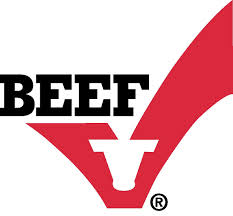Beef councils gather to discuss Beef Checkoff Program
Representatives of 28 state beef councils gathered near Denver Oct. 16 to 18 to learn more about national 2018 Beef Checkoff Program efforts and share their thoughts on how those programs could be expanded or extended through their states. The Partnerships in Action Conference in the offices of the NCBA, a contractor to the Beef Checkoff Program. The checkoff 2018 fiscal year began Oct. 1.
Among items of discussion was the relaunch of the “Beef. It’s What’s For Dinner” brand and website, with a “Rethink the Ranch” approach and new videos and promotion on social media platforms. The program went live Oct. 9 and showcases the people who raise beef, celebrates the nutritional benefits of beef for active lifestyles and provides culinary inspiration.
“This annual Federation of State Beef Councils event is a collaborative effort to kick off the checkoff program of work with enthusiasm,” according to Todd Johnson, NCBA senior vice president, Federation Services. “Our state team members and their boards of directors have come to appreciate the ways our partnership can enhance the value of the beef checkoff to those who pay into the program.”
According to George Quackenbush, executive director of the Michigan Beef Industry Commission, the conference helps communicate a seamless, coordinated state and national plan that can most effectively reach consumers with the same message in repeated ways. “The reason we put such value on this meeting as a state council is that this is where we learn what programs will be taking place at the national level, when we can expect those things to roll out and how we can extend those programs in our state,” he said. “We can really be the army that takes these programs to the audience on the local and state levels.”
Erin Beasley, executive vice president of the Alabama Cattlemen’s Association, agrees, saying the timing from their state perspective is perfect. “We’re actually about to get into our planning mode, so this gives us an opportunity to meet with the staff, bring all of those ideas back, then meet with our Checkoff Task Force Committee to start our planning and budgeting for the 2018 year,” she said. “The timing of this meeting, with the content and the involvement of the national staff, is absolutely integral to what we do at the state level.”
Another benefit of the conference, according to Jean O’Toole, executive director of the New York Beef Council, is the sharing that goes on between states. “You learn so much from other states and what they do,” she said. “We sometimes joke that we rip off and repurpose, but we have no hidden secrets between our councils. It’s share and collaborate based on your budgets and what you can do. It also gives you different insights. We’re all creative and have a variety of talents.”
Because she is from a state with a higher population and lower cattle numbers, O’Toole values different types of input. “Sometimes you get support financially, sometimes you just get support through information, but either way you can’t beat it,” she said. “I haven’t seen an organization like this in all my years and it’s phenomenal fun.”
“It’s great to see that we’re all singing from the same songbook,” said Chris Freland, executive director of the Iowa Beef Industry Council. “When you’re united you’re so much stronger than if you’re separated and going in your own direction. It also validates that you’re doing the right thing within your state, as well as making sure your state board and farmers and ranchers are represented nationally. In addition, it provides our state staff an opportunity to collaborate with those in other states who are serving in the same roles.”
According to Ann Wittmann, executive director of the Wyoming Beef Council, states with low populations and small staffs value the kind of teamwork the conference provides. “The state and national coordination are what makes the beef industry so special and so workable, especially from the perspective of a small staff state,” she said. “We have programs of our own. But what we don’t have is the beautiful imagery, the fantastic story-telling, the video images, the larger-than-life programs and programs that reach out beyond what we can do as a small state. It’s the best investment that we can make so that we all work together as a team.”
Wittmann said bonding together through an event like the Partnerships in Action Conference makes the program stronger. “The partnership between the Federation of State Beef Councils, the Federation staff, and the individual beef councils is powerful and incredibly efficient,” she said.
The Federation of State Beef Councils is a division of NCBA, a contractor to the Beef Checkoff Program. The Beef Checkoff Program is administered by the Cattlemen’s Beef Board, with oversight provided by the U.S. Department of Agriculture.




 The Montana Beef Council would like to invest $860,000 into programs of beef promotion, education, consumer information, industry information, foreign marketing and producer communications in the fiscal year 2018, which began Oct. 1. Programs approved could be funded through Montana’s 50 cents in-state portion of the $1 per head beef checkoff, after Montana producers provide affirmative consent to Montana Beef Council to retain that portion of their assessment.
The Montana Beef Council would like to invest $860,000 into programs of beef promotion, education, consumer information, industry information, foreign marketing and producer communications in the fiscal year 2018, which began Oct. 1. Programs approved could be funded through Montana’s 50 cents in-state portion of the $1 per head beef checkoff, after Montana producers provide affirmative consent to Montana Beef Council to retain that portion of their assessment.


